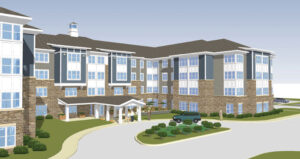A new report singles out three Western states (Arizona, Colorado, and Nevada) as especially ripe for seniors housing growth, notably in the active adult segment as well as the assisted living and independent living categories.
The white paper by Hunt Real Estate Capital said population growth in the trio of states has been impressive, considering that since 2006 Nevada’s 65-and-over population has increased 57 percent, Colorado’s 55 percent, and Arizona’s 50 percent.
In pointing to the allure of these states, the report emphasizes that they are not the only regions showing potential for development, but they are the most likely to see attention in a challenging time for seniors housing and occupancy levels.
Citing data from the National Investment Center for Seniors Housing & Care (NIC), the white paper said in the second quarter of 2018 the seniors housing occupancy rate declined to 87.9 percent, the lowest point since the first quarter of 2010. Later reports for the rest of 2018 offered less negative news, as inventory growth pressures eased somewhat.
“The [NIC] figures show an uncertain outlook in some markets, yet they also show the opportunity for forward-thinking, innovative developers. That can mean active adult [segment], but it can also mean exploring areas where senior housing opportunities are on the rise,” the paper said.
In looking at the individual states highlighted in their research, the authors said with its recent population explosion in the seniors bracket, Nevada trails only Alaska for the fastest-growing senior population in the United States and is the fastest-growing for any state with a 65-plus population over 100,000.
“Both Nevada and Arizona offer similar benefits to seniors, and thus to developers. Both states offer appealing lifestyles with lots of outdoor living, low costs of living, and low-income tax rates, which is still important for working seniors,” the report said.
Nevada’s primary market, Las Vegas, had the third-lowest third quarter 2018 occupancy, 29th out of the 31 primary markets tracked by NIC for seniors housing (combined assisted living and independent living property types), and ranked 25th in independent living.
“It also has a 2.5 percent penetration rate in independent living, compared to the primary market average of 5.8 percent. Las Vegas’ low occupancy rate in assisted living (80.0 percent), matched with its low penetration rate (3.2 percent), makes the city a ‘red flag’ for assisted living [development potential],” the report said.
Switching to Colorado, the report said a key for developers is that the overall percent increase of persons 65 and older is strong, and there is not an abundance of active adult communities, as examples of potential growth areas.
Finally, the report said while Arizona trails Nevada and Colorado for senior population growth, it holds a crucial advantage in that its consumers have more wealth. This is especially important for developers in the continuing care retirement community space. The overall growth in Arizona is being fueled in part by older residents moving into the state from California, where state income taxes are nearly double those in Arizona, the report said.
Patrick Connole





